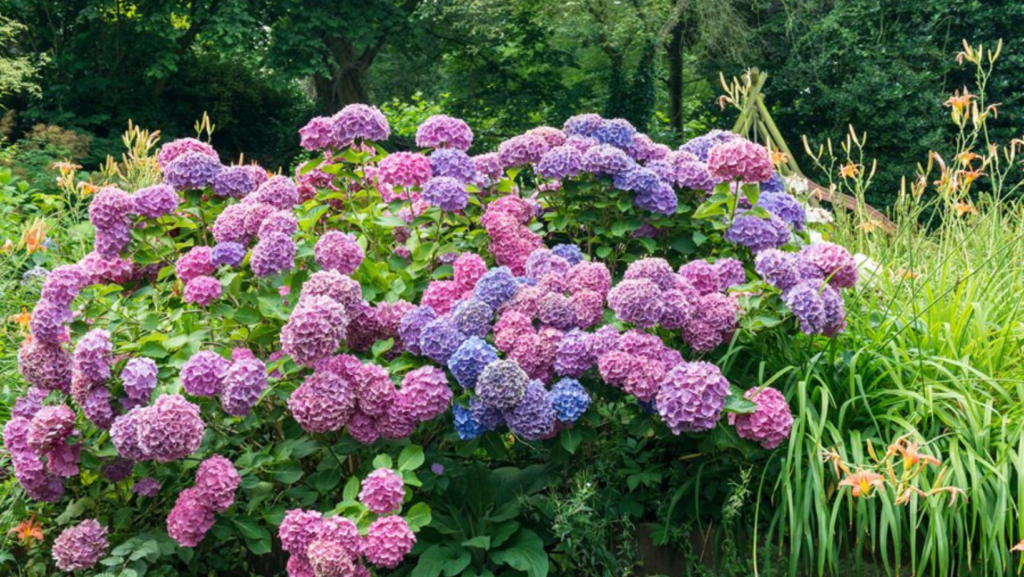Hydrangeas are the rockstars of the garden world – gorgeous blooms, not too fussy. But hold on, there can be some mixed signals on how to keep them at their best. We already talked about Best Hydrangea to for the front porch of a house, so today let’s about new and old wood growing Hydrangeas.
Think of it like this: hydrangeas are all cousins, but they don’t all grow or bloom the same way. Some change color depending on the soil’s acidity, some flower on brand new growth this year, and others bloom on the stems they grew last year. It all depends on the type of hydrangea you have. So, the key is to identify your specific hydrangea and keep that info card close by – it’s your BFF for keeping those blooms booming!
RELATED BLOG:
- 4 BEST HYDRANGEA FOR FRONT OF HOUSE
- 7-TRICKS TO PRUNE,PROPAGATE AND FERTILIZE INCREDIBALL HYDRANGEA PLANT
hydrangeas bloom on old wood
These hydrangeas are the meticulous organizers of the hydrangea world. They’re like responsible event planners, meticulously setting their flower buds in late summer or fall on the stems that grew the previous year. That means the stunning blooms you see in summer were actually in the works since last season! Here are some popular examples of these early planners:
1-Bigleaf Hydrangeas (Hydrangea macrophylla)
The quintessential hydrangea, bigleaf hydrangeas are known for their large, rounded blooms in a spectacular array of colors (blue, pink, purple, and white). These dependable bloomers can light up any garden with their vibrant mophead or lacecap flowers. But their meticulous planning requires a little extra care from you. Since their flower buds are set on old wood. If you have a bigleaf hydrangea and want to maintain its size and shape, wait until after it finishes flowering in summer to prune. You can also remove any dead, diseased, or crossing branches throughout the year.
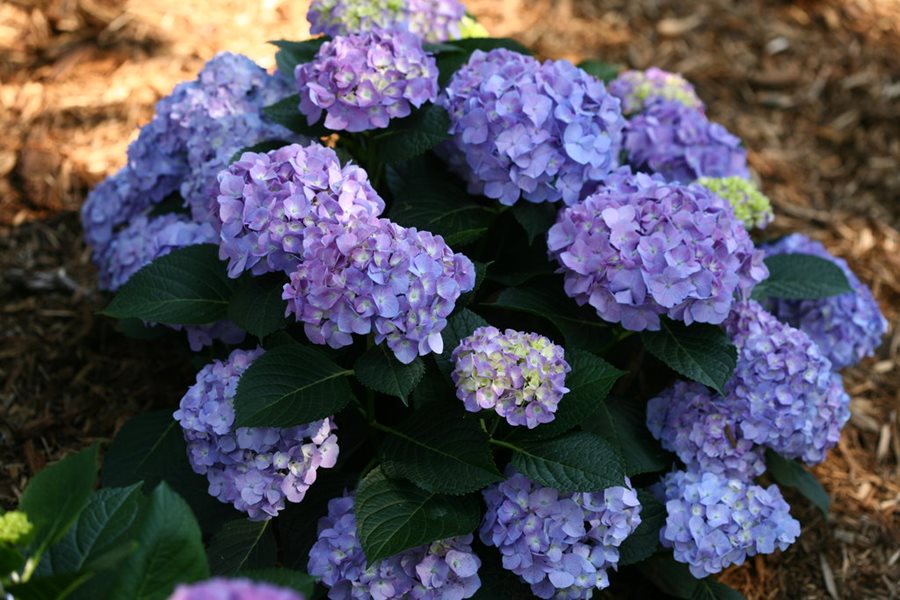
Image by Proven Winners
Ideal Conditions
- Light: Bigleaf hydrangeas prefer morning sun and afternoon shade, especially in hotter climates.
- Soil: They thrive in moist, well-draining, acidic soil. If your soil is alkaline and you want blue blooms, you can add amendments like aluminum sulfate to lower the pH.
- Watering: Consistent watering is key, especially during hot weather and periods of drought. Their large leaves lose moisture quickly, so keep an eye on the soil and water deeply when needed.
When to Prune
- For maintaining size and shape: Prune only after the bigleaf hydrangea finishes flowering in summer. This allows the plant to set buds for next year’s blooms on the new growth it produces after flowering.
- Deadheading (optional): You can deadhead faded blooms throughout the season to improve the overall appearance of the plant, but this is not necessary for flower production.
- Cleaning Up: Remove any dead, diseased, or crossing branches throughout the year to promote healthy growth and air circulation.
2-Lacecap Hydrangeas (Hydrangea macrophylla):
These hydrangeas offer a unique two-in-one flower show, combining the elegance of bigleaf hydrangeas with a touch of whimsy. They have a ring of big, showy flowers surrounding a center of tiny flowers, creating a beautiful lace-like effect. They come in similar color options as bigleaf hydrangeas (blue, pink, purple, and white) and add a touch of charm to any garden border. Just like their bigleaf cousins, lacecap hydrangeas are early planners. Their flower buds form on old wood in late summer or fall, so pruning needs to be done after flowering in summer to avoid sacrificing next season’s blooms.
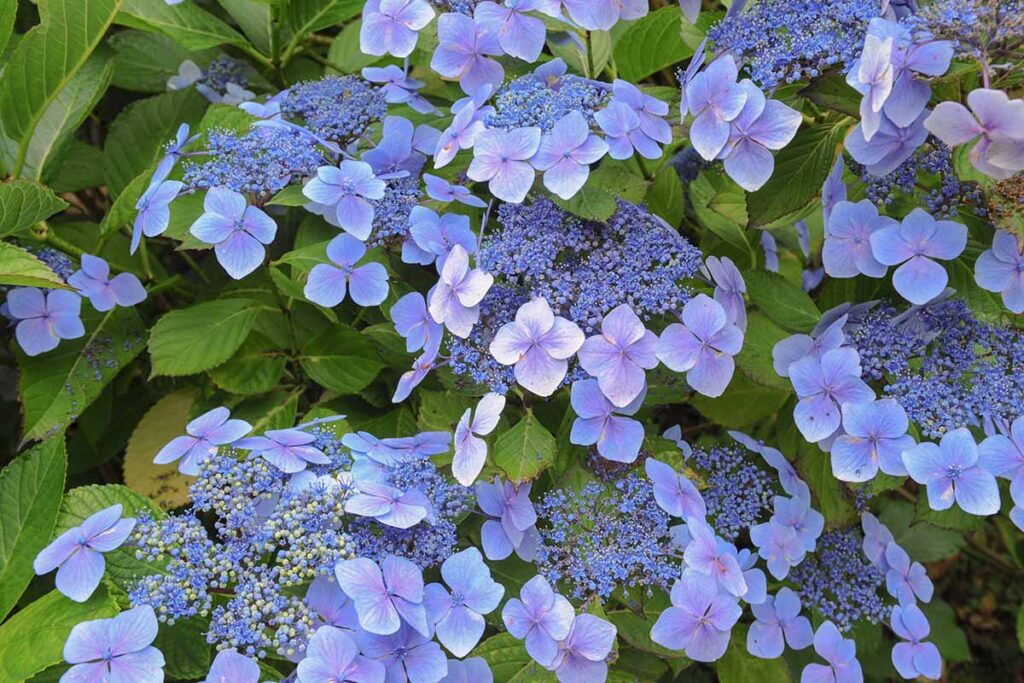
Ideal Conditions
- Sunshine with a Side of Shade: These hydrangeas prefer a location with morning sun and afternoon shade. In hotter climates, even more shade might be needed. Think of a spot that gets dappled sunlight throughout the day.
- Thirsty for Refreshment: Regular watering is key, especially during hot and dry spells. Aim for moist, well-drained soil to keep your hydrangea happy.
- Rich and Nutritious: Amending your soil with compost or a balanced fertilizer will give your lacecap the nutrients it needs to thrive.
When to Prune
Since lacecap hydrangeas flower on “old wood” (stems grown the previous year), pruning at the wrong time can steal next season’s blooms. Here’s the key:
- Hold the Shears Until Summer’s End: Wait until after your hydrangea has finished flowering in late summer or early fall. This ensures you’re not accidentally snipping off next year’s flower buds.
- Light Shaping or Deadheading: For routine maintenance, you can lightly prune to remove spent blooms and maintain the plant’s desired shape. Just be sure not to cut back too much.
- Rejuvenating an Older Plant: If your lacecap isn’t flowering as much, a more aggressive pruning might be needed. In late winter (before new growth appears), you can remove up to one-third of the older stems at ground level. This will encourage new growth and potentially more blooms the following year.
3-Oakleaf Hydrangeas (Hydrangea quercifolia):
These interesting hydrangeas stand out not just for their gorgeous flower clusters in shades of white, but also for their unique lobed leaves that resemble oak leaves. The flowers themselves are quite showy, and as they mature, they transform into an attractive rusty brown color, adding further visual interest to your garden. But these beauties require planning on your part as well. Since they bloom on old wood, established oakleaf hydrangeas should only be pruned after flowering in summer. Light pruning to remove dead or damaged branches can be done any time of year, but avoid major pruning in late winter or early spring, as this will remove the flower buds for the upcoming season.
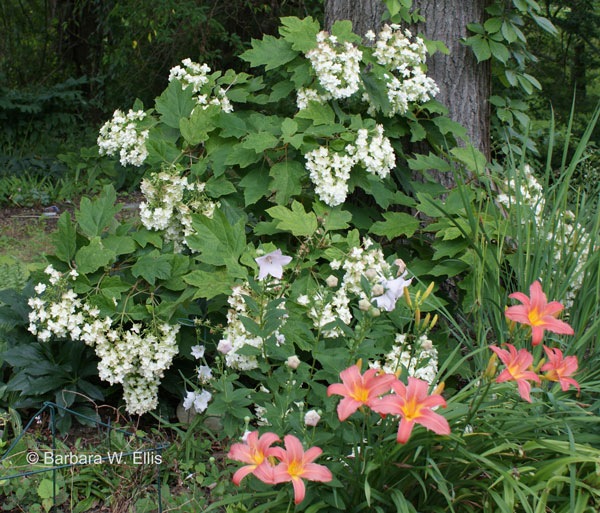
Ideal Conditions
These low-maintenance shrubs thrive in dappled sunlight or part shade, making them perfect for woodland borders or areas that get some afternoon relief from the sun. They prefer moist, well-drained, acidic soil.
When to Prune
Here’s the key thing to remember with Oakleaf Hydrangeas: they bloom on old wood. This means the flower buds for next season form on the stems grown the previous year.
- Light Pruning Anytime: Feel free to remove dead, diseased, or damaged branches throughout the year to maintain a healthy shape.
- Major Pruning: Hold off on any major pruning until after the flowers have faded in summer. This ensures you don’t accidentally cut off the flower buds for the following year.
4-Climbing Hydrangeas (Hydrangea anomala petiolaris):
Perfect for walls, fences, or trellises, climbing hydrangeas are vigorous growers that can reach up to 80 feet with proper support. Their large, showy flower clusters in shades of white and cream add a touch of romance to any vertical space. They’re also early planners, setting their flower buds on old wood in late summer or fall. To keep your climbing hydrangeas blooming year after year, avoid pruning them in late winter or early spring. Instead, wait until after flowering in summer to prune. This will allow the plant to set its buds for the following season’s display.
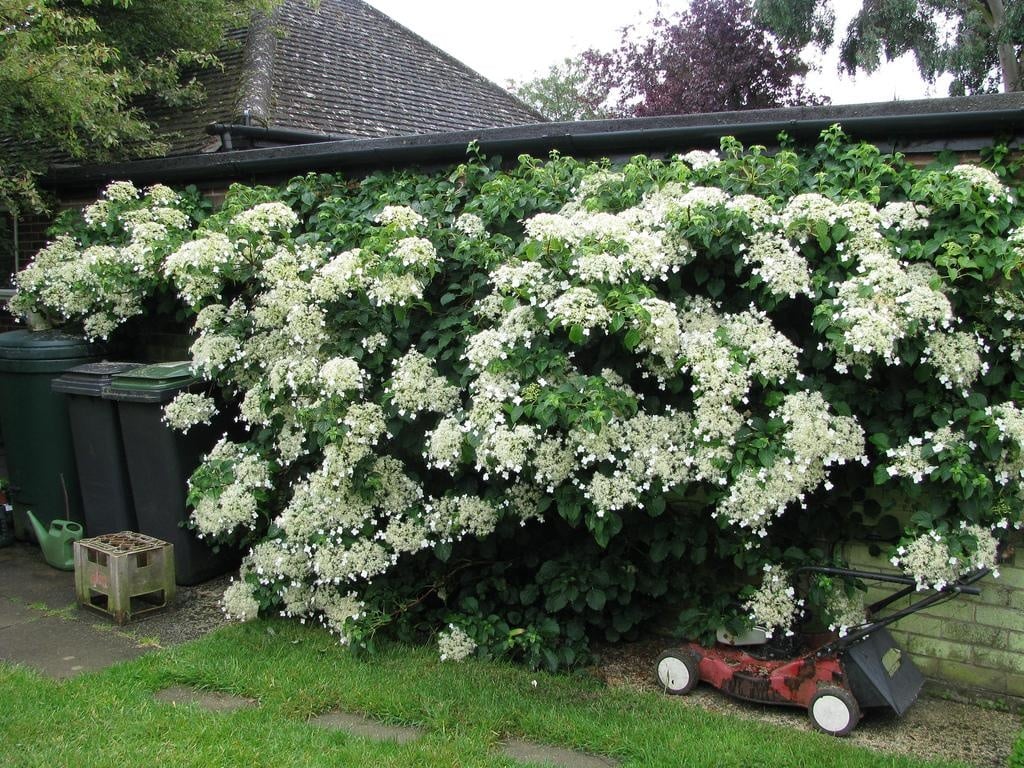
Ideal Conditions
Climbing hydrangeas thrive in moist, well-drained soil with some afternoon shade. They’re tolerant of a wider range of light conditions compared to other hydrangeas, but full sun can scorch the leaves.
When to Prune
Avoid pruning in late winter or early spring, as this removes the flower buds that have already formed. Instead, wait until after flowering in summer to prune. This allows the plant to focus its energy on setting new flower buds for the following year’s display.
5-Mountain Hydrangeas (Hydrangea serrata)
Known for their abundant clusters of smaller flowers in white, pink, or blue, mountain hydrangeas are a beautiful choice for borders or foundation plantings. They’re also more compact than bigleaf hydrangeas, making them a good option for smaller gardens. But just like bigleaf hydrangeas, they’re meticulous planners. Their flower buds form on old wood in late summer or fall. So, if you want to enjoy their blooms come summer, avoid pruning them in late winter or early spring. Instead, wait until after flowering in summer to prune and maintain the size and shape of your mountain hydrangeas.
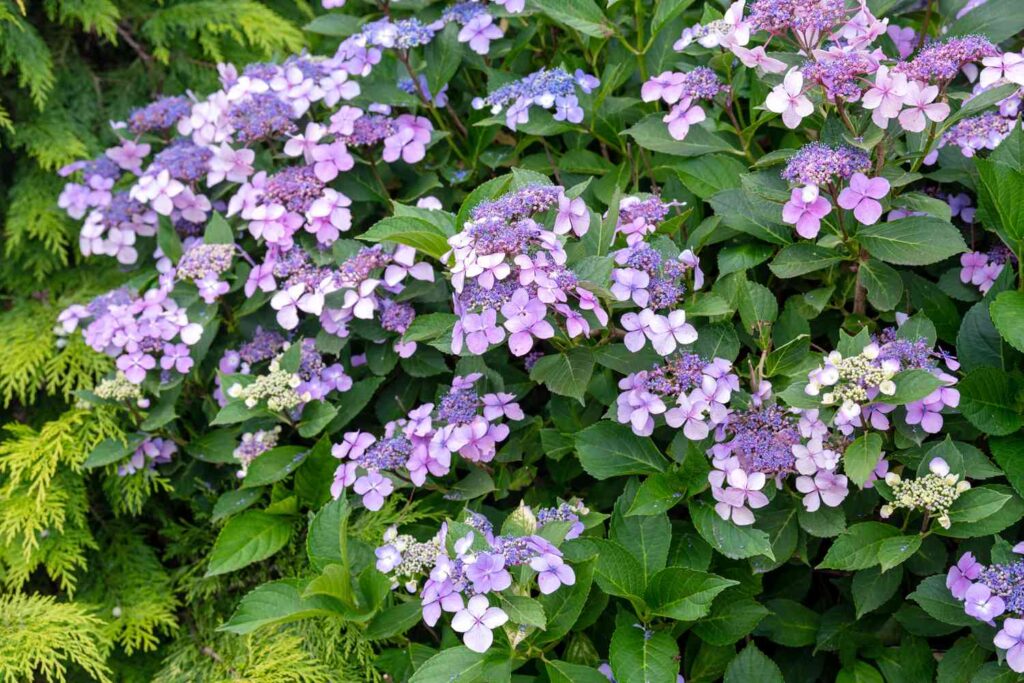
Image by Evgeniya Vlasova
Ideal condition
Mountain hydrangeas prefer partial to full shade, especially in hotter climates. They thrive in well-drained, moist soil, so keep them happy with regular watering during dry spells.
When to Prune
Hold off on those shears! Unlike some hydrangeas, pruning mountain hydrangeas in late winter or early spring will remove the precious flower buds you’ve been waiting for. Instead, wait until after they’ve finished flowering in summer. This allows them to focus their energy on setting buds for the following year’s display. By pruning then, you can also maintain their size and shape for a neat and tidy look.
hydrangeas bloom on old wood
Others (the new wood bloomers) are more easygoing. They wait until closer to the date, knowing they have plenty of time to throw a fantastic bash. That’s the difference between old wood and new wood blooming hydrangeas.
New wood bloomers are the relaxed party throwers of the hydrangea world. They don’t set their flower bud decorations until late spring or early summer, using the new growth that sprouted that season. This might seem a little last-minute, but it has a big advantage:
- Winter Woes? No Problem! Harsh winters can damage flower buds on old branches. But new wood bloomers don’t have to worry about that. Since their buds form on the current season’s growth, even a surprise snowstorm won’t ruin their summer display. They’re like the party planners who booked a venue indoors – a little less risky!
- A Touch Later to the Party: Because they wait to set their buds, new wood bloomers generally flower a bit later in the summer compared to their old wood counterparts. Think of them as throwing their parties in August instead of July. But hey, a little wait is worth the guarantee of a show, right?
Here are a couple of popular new wood bloomers:
6-Panicle Hydrangeas (Hydrangea paniculata)
The life of the party! These hydrangeas boast large, cone-shaped flower clusters in shades of white, pink, and green. They’re reliable bloomers and can grow quite tall, making them a stunning addition to the back of a border or as a focal point in your garden.
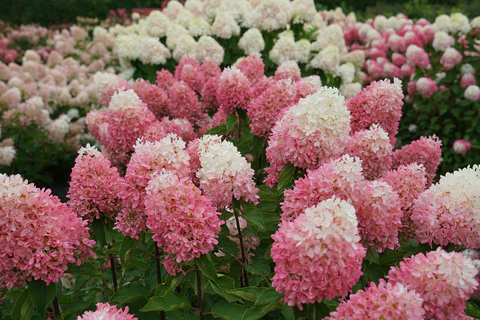
Ideal Conditions
Just like any good party guest, panicle hydrangeas are pretty easygoing. They thrive in full sun to part shade, meaning they’ll be happy with at least a few hours of direct sunlight each day. Afternoon shade is appreciated in hotter climates. The most important thing is well-drained soil. They hate soggy feet, so amend your soil with compost or other organic matter if it’s heavy clay. Consistent moisture is key, so plan to water regularly, especially during hot, dry spells.
When to Prune
Since panicle hydrangeas bloom on new growth, you have more freedom with pruning compared to other hydrangeas. The best time to give them a trim is in late winter or early spring. This allows you to remove any dead or diseased branches and shape the plant before new growth explodes. You can also prune them up until early summer, but keep in mind that you might sacrifice some flower buds for that year.
7-Smooth Hydrangeas (Hydrangea arborescens)
These cheerful hydrangeas have large, rounded flower clusters in white. They’re known for their compact size, making them perfect for smaller gardens or containers. Plus, their easygoing nature and reliable blooms make them a great choice for beginner gardeners.
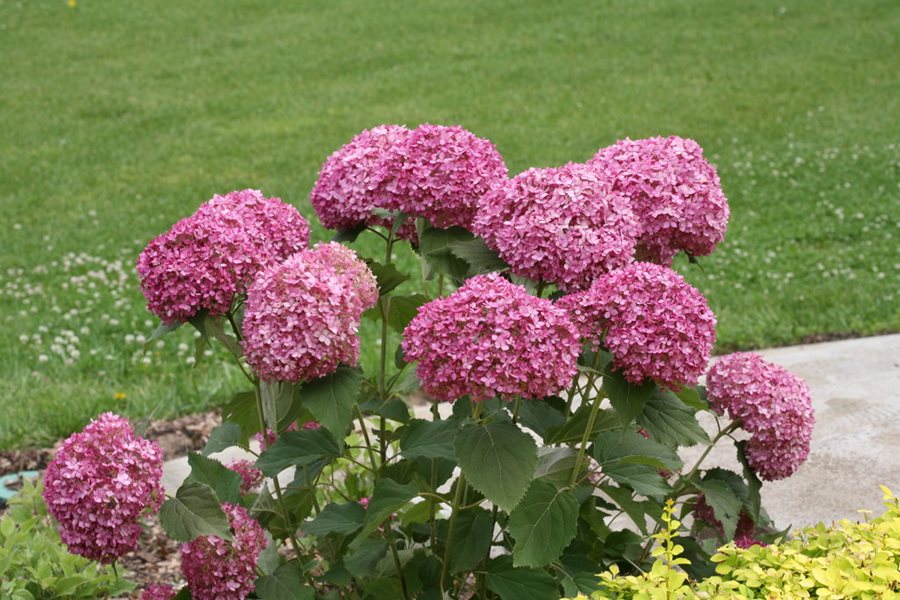
Ideal Conditions
- Light: They prefer partial shade with a few hours of morning sun. Harsh afternoon sun can scorch the leaves, so some dappled shade in the hottest part of the day is ideal.
- Soil: Well-drained soil is crucial. They dislike soggy feet, so if your soil is heavy clay, amend it with compost or other organic matter to improve drainage.
- Moisture: Consistent moisture is key, especially during hot, dry spells. Water deeply and regularly, allowing the soil to dry slightly between waterings.
When to Prune
Since smooth hydrangeas flower on new growth, late winter or early spring is the prime pruning window. This allows you to remove old stems and encourage vigorous new growth that will produce those gorgeous blooms. You can prune them all the way down to the ground if you want to keep them compact, or cut back the stems by one-third to maintain a specific size.
Reblooming Hydrangeas
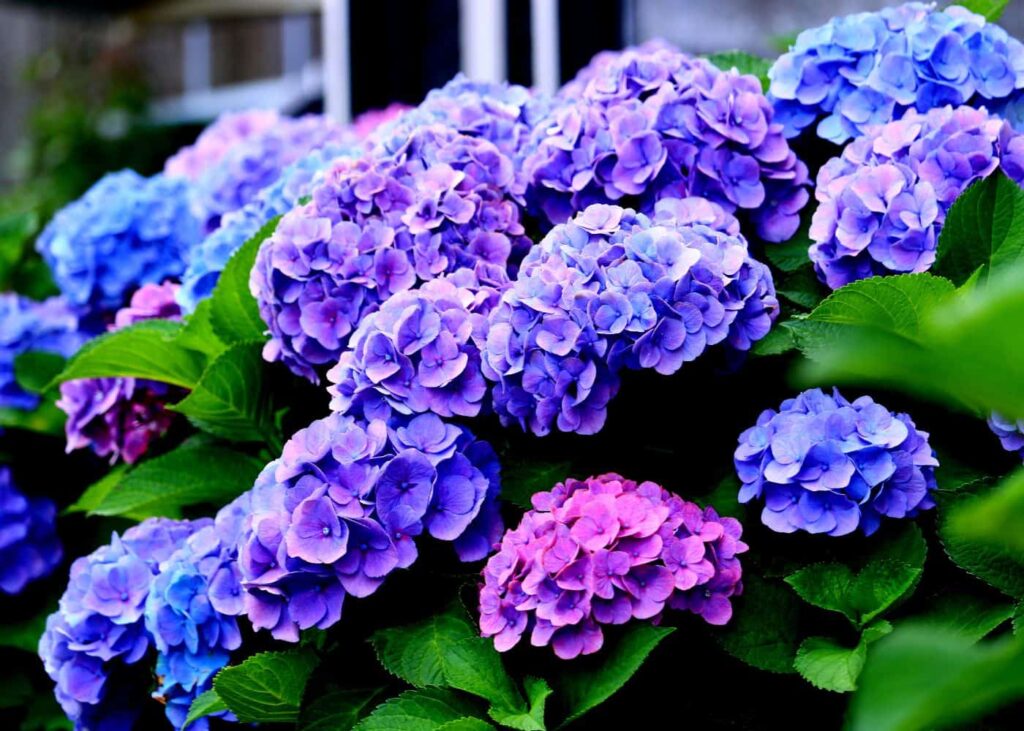
These are like the overachievers of the hydrangea world. They’re a type of bigleaf or mountain hydrangea that can bloom on both old and new wood. So, even if a harsh winter damages the buds on the old branches, they’ll still put on a show with their new growth. Examples include Let’s Dance and Tuff Stuff hydrangeas.


